Everything You Need To Know About Roof Vents
Table of Contents:
Proper ventilation in your roof might not be the first thing that comes to mind when you’re working on your house – and understandably so. Those vents on your roof and under the roofline are often overlooked, but they are part of an invisible, complex system designed to regulate temperatures in your house and keep moisture out of your attic.
At SnapZ, we live and breathe ridge vents so much that we patented our own. While we are proud of our product, we also want to educate you on the alternative types of ventilation so that you can choose wisely as a homeowner.
So, let’s sit back, talk about this hot topic, and learn how roof vents help keep your home comfortable!
What Do Roof Vents Do?
Roof vents serve three purposes:
Circulate air.
Cool, fresh air enters your attic from an intake vent, and warm, stale air exits through an exhaust vent.
Air movement helps keep the building’s occupants cool and carries away pollutants and microbes that can linger in stale air and make you sick.
Cooling the attic matters because excessive heat in an attic can cause blisters and cracks in asphalt roofing shingles over time. Excess heat also causes the wood inside the attic to expand and contract. This cycle of expansion and contraction can cause sealants and flashing to stretch and break, leading to potential moisture issues.
Venting this excess heat helps keep thermal expansion and contraction to a minimum, extending the life of your roof.
Prevents the formation of ice dams.
Your ventilation system doesn’t just keep your attic cool in the hot summer but also cool in the winter. Warm air rises from the home’s heating system into the attic, causing snow on your roof to temporarily melt and drip down to re-freeze. This results in the formation of ice dams that can damage your roof and gutters or hurt someone standing below if the ice breaks off.
Removes moisture from the attic.
As warm air rises through the house, moisture forms and mixes with the cooler air in the attic. A damp attic will lead to mold, penetrating the wood rafters, roof panels, and insulation, leading to expensive repair and replacement. Ventilation circulates and drives out damp air that accumulates naturally in an attic.
While it is possible to have a sealed, unvented attic, the margin for error on a sealed attic is higher, with fewer gains than a vented system.
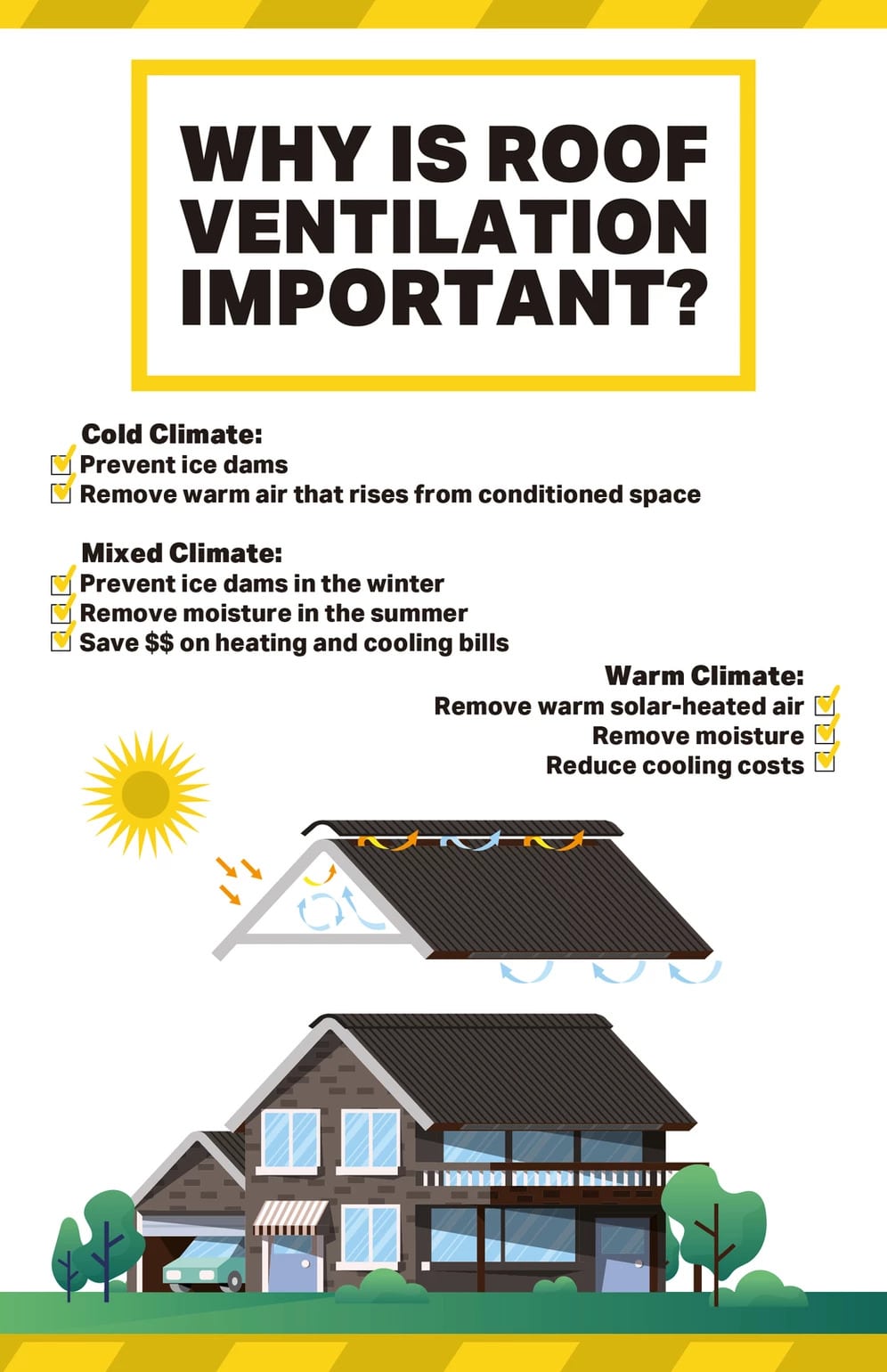
Types of Ventilation
There are two ways ventilation works to circulate air and keep your attic dry:
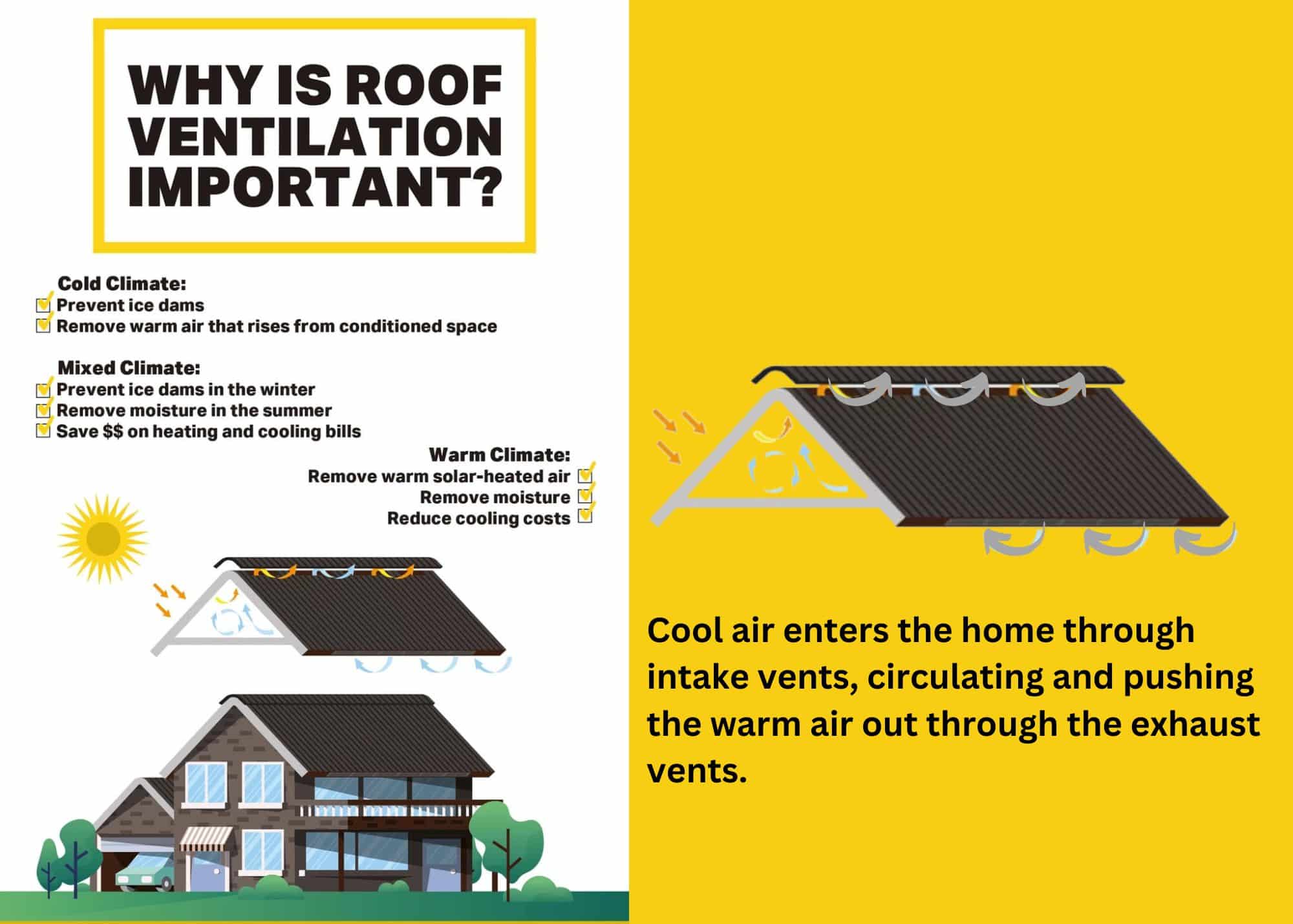
Exhaust:
According to science, heat does not rise – hot air does. When heat touches moving air, this hot air gets carried off to a new location. This movement, called heat convection, is the reason for exhaust vents in a roof. As this hot air moves upwards, it travels along the roof until it exits through an exhaust port. Examples of exhaust vent systems include box vents and ridge vents.
An exhaust vent is just half of a ventilation system, however. Air must also be drawn into the roof, which the other half of the system does.
Intake:
An intake vent works by bringing cooler air into the roof. Much like how opening windows on opposite ends of sides of a house lets air blow through from one end to another, cool air sucked into the intake displaces hot air by pushing it out of the vents. Examples of intake vents include soffit and gable vents.
Exhaust and intake vents form part of a balanced ventilation system by simultaneously pulling in and pushing air out. However, it’s not as simple as making holes and putting in vents. This process involves using a little math called the 1:300 rule.
But don’t worry; the math involved won’t be exhausting. It’s quite simple!
The 1:300 Rule
The 1:300 rule means that for every 300 square feet of attic floor space, you need a minimum of 1 square foot of attic ventilation to be split evenly between intake and exhaust vents. This is a guideline issued by the Federal Housing Administration (FHA).
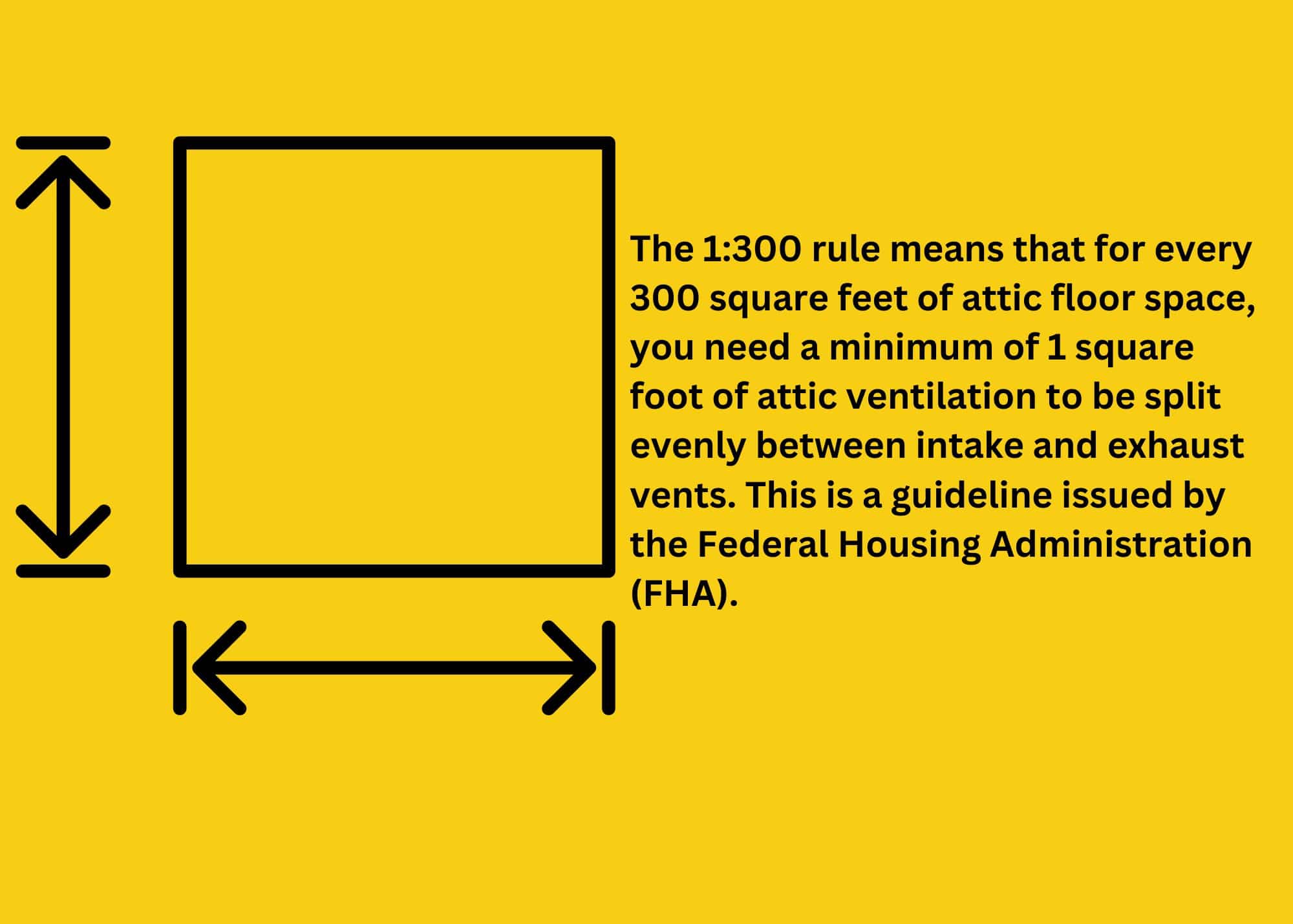
Why is this important? This calculation was determined to be the minimum amount of ventilation needed to keep an attic dry and cool. You can learn more about the 1:300 ratio here.
So, now that we’ve covered the basics of attic ventilation, let’s look at the types of vents to which you can apply that 1:300 rule.
Types of Intake Vents
As we discussed earlier, there are two types of vents – intake and exhaust. Let’s start with intake vents:
Soffit vents are by far the most popular form of roof intake venting.
Combined with ridge vents (which we’ll discuss later in this blog), they form the most popular combination of intake and exhaust vents.
Soffits are installed under the eaves (or overhang) of a roof. Because not all homes are the same, there are two kinds of soffit vents – individual, typically rectangular vents, or continuous soffits, which look like vinyl panels with holes drilled into them and wrap around the house, blending in with the overhang.
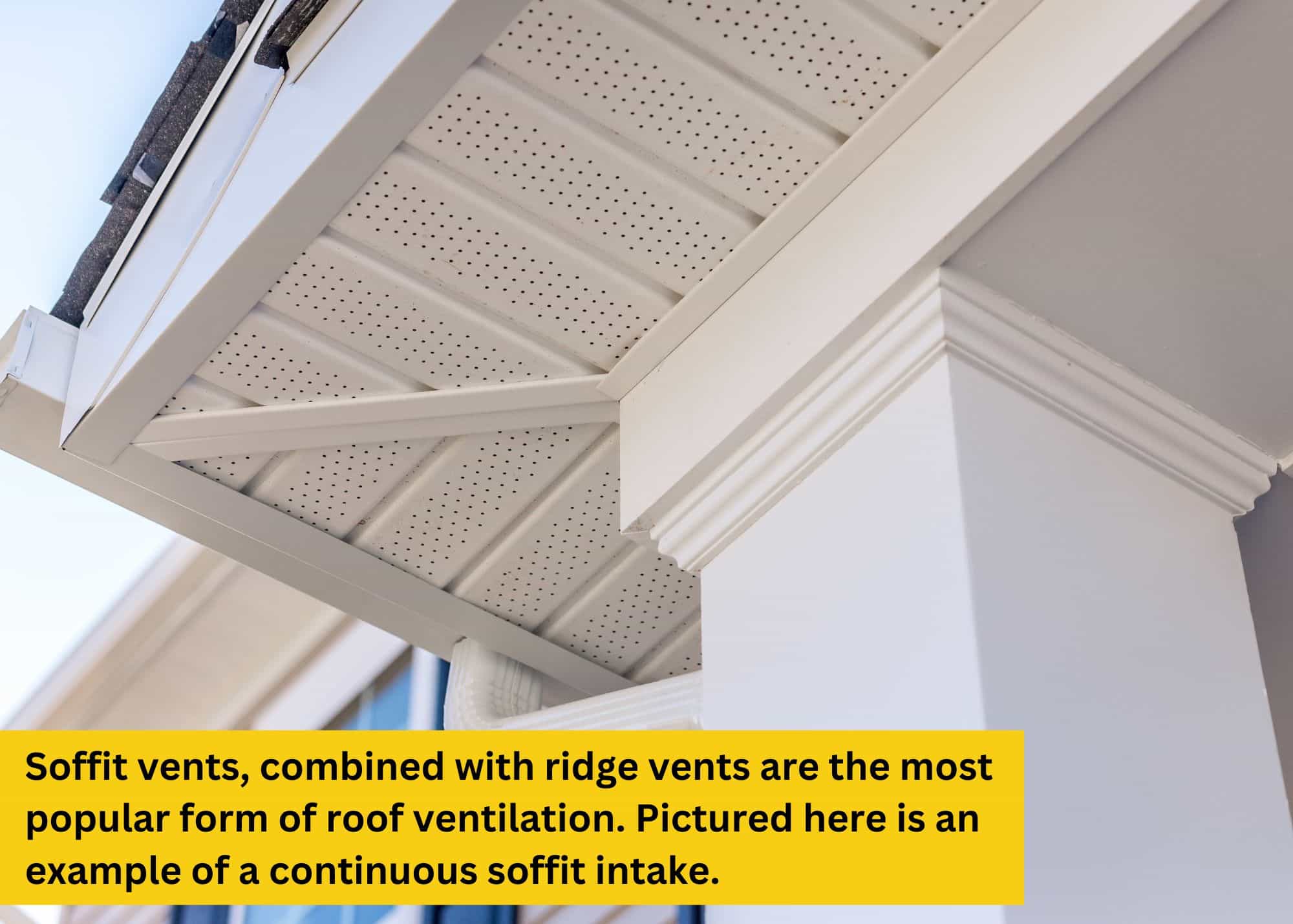
Gable vents are those triangular vents you see on the peaks of the side of houses.
In older designs, they partially function as exhaust vents, utilizing cross or horizontal ventilation to keep air moving through the attic. You put a gable vent on one side of the house and a second vent on the other.
Gable vents are less effective due to their reliance on the horizontal movement of air since the cross breeze can be impeded by rafter beams, peaks, valleys, dormers, and other parts of the roof structure.
Another drawback of gable vents is that they are typically incompatible with vertical intakes or exhaust systems, as the cross breeze often disrupts air flowing from the vertical intake to the exhaust.
Over-fascia vents are newer and designed primarily for roofs with sufficiently sized eaves to fit soffit vents.
Fascia vents are placed on top of the fascia board and gutter, directly underneath the starter row of shingles. The idea is to have the air intake where the wind hits the roof instead of relying on rising air, which is how soffits work.
The verdict is still out on how effective they are. Although they stretch along the entirety of the bottom roofline, over-fascia vents are only about ½ an inch in height, bringing to question how much airflow gets in with the low surface area compared to traditional soffits.
Drip edge vents are similar to over fascias – designed for roofs with smaller eaves – but differ because they are installed underneath the first row of shingles.
Drip edge vents are usually installed to the drip edge as an add-on, though holes can be drilled into the drip edge panels. Because of the complicated nature of its installation, this should only be done by a professional.
Types of Exhaust Vents
Now that we’ve covered (or, rather, uncovered) intake vents, let’s look at the exhausts!
Ridge vents are the most common form of exhaust ventilation, and combined with the soffit vents discussed earlier, are also the most cost-effective and efficient.
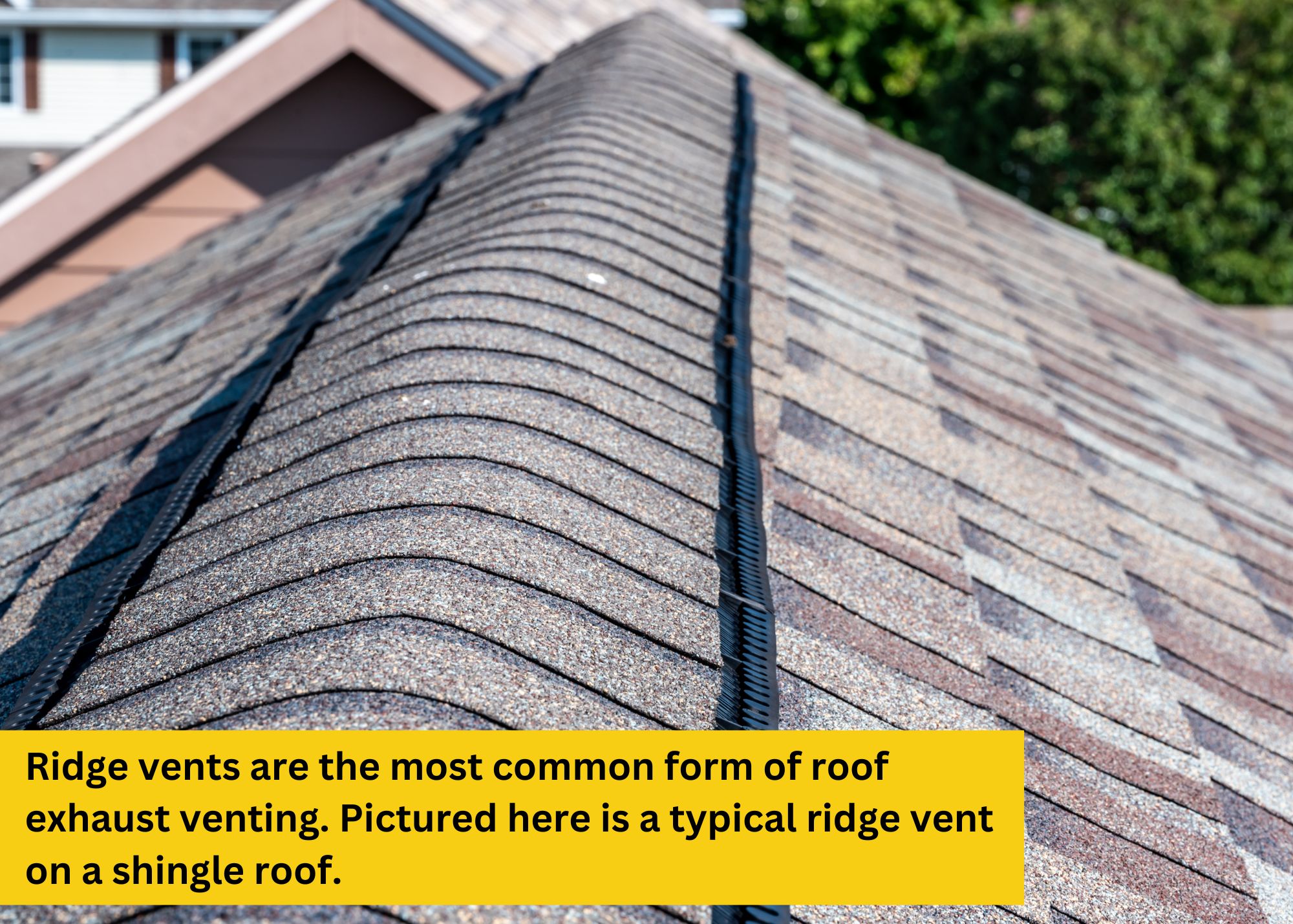
With a winning combination of large surface area, low profile, and effortless function, ridge vents are the default ventilation choice for most homes.
If you’re reading this blog after looking at our website, you’ll know that ridge vents are SnapZ’s bread and butter! Check out this blog if you’d like to learn more about our ridge vents.
Offridge and box vents are similar in that they vent through a spot on the roof, whether a slot for a ridge vent or a hole for a box vent.
They’re less effective because they are smaller and do not sit as high on the roof.
So why use them? Because not all roofs are the same, offridge and box vents are used when the ridge line is short, such as those on more complex roofs with many peaks, valleys, and dormers.
Cupola vents were originally used in barns, created to allow more air into a barn’s loft to help dry hay and other crops stored in the structure.
In modern roofing, a cupola vent allows extra light into the area underneath the vent and can be visually pleasing on the roofline.
Electrical and solar-powered vents sound appealing due to their power and ability to draw more air out.
However, they can be too powerful, potentially causing other issues.
According to research done at the Florida Solar Energy Center, “vent fans have the potential to reduce measured peak summer attic air temperatures by over 20 degrees Fahrenheit. However, the impact over the cooling season is fairly modest with well-insulated attics.” It was also noted that because the study occurred in air-conditioned homes, cold air was pulled out, resulting in the air conditioning systems working harder and higher energy costs.
Finally, roof turbines, also known as whirlybird ventilation, are aluminum blades on a cowl, rotating using the wind blowing on the blades, causing it to turn and pull the air out from inside the attic and out of the house.
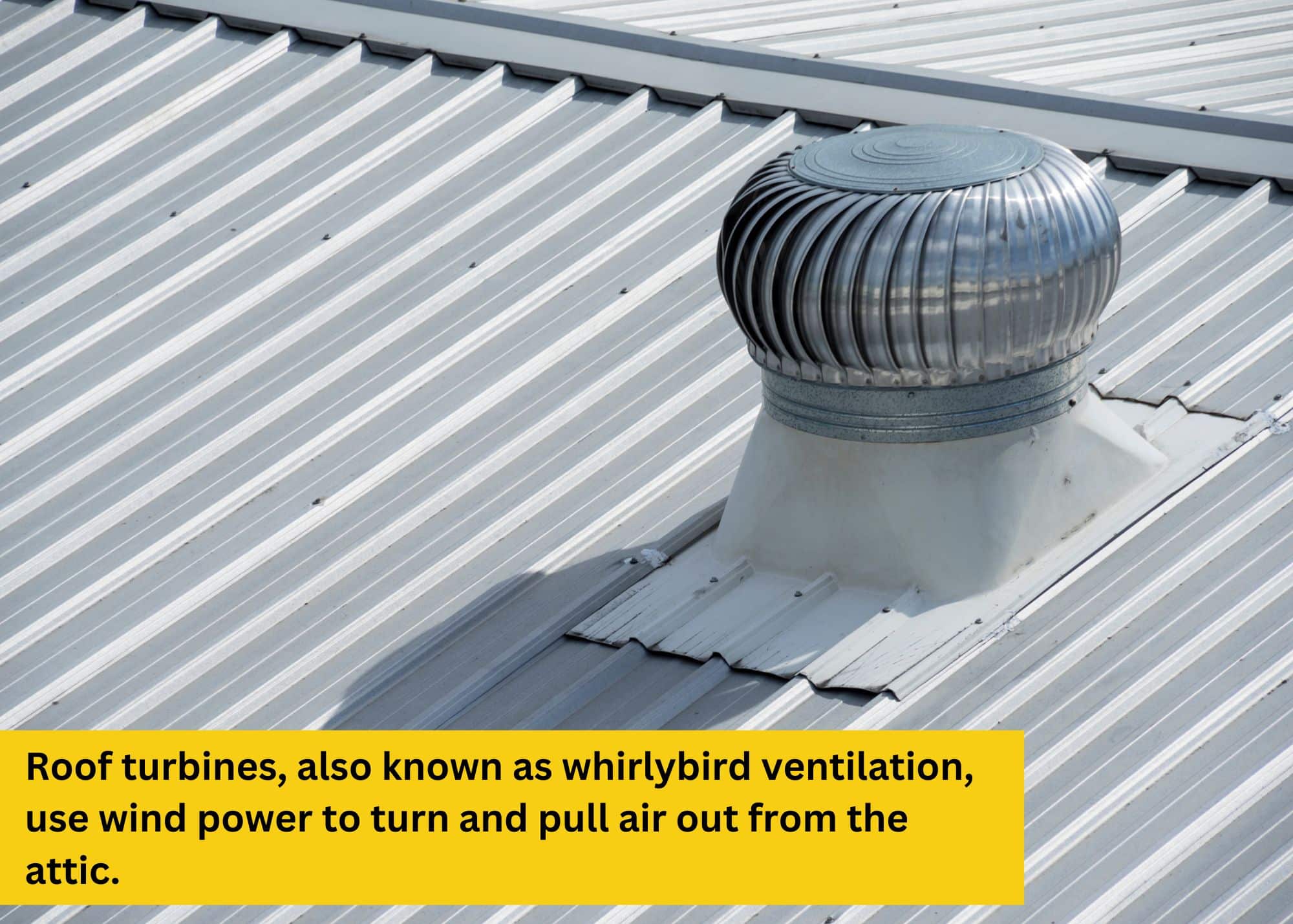
Unlike powered and solar vents, roof turbines are wind-powered. However, the catch is that roof turbines need actual wind and maintenance to keep the moving parts functioning. Some people also consider them unsightly. Roof turbines work best in windy areas.
No matter the choice of ventilation, the important thing is that you must have proper ventilation installed in your attic, with all the appropriate intake and exhausts placed in the right areas and adequately balanced. Your comfort and health depend on it!
Conclusion
Who knew that these vents could be such an essential part of a healthy and comfortable home?
When a roofer challenged us in 2014 to design a more durable, efficient, and easier-to-install ridge vent, we never anticipated that project to live on beyond the client’s request.
Designed and manufactured in the USA, SnapZ Vents is a true-and-tested patented design that is used and trusted by thousands of roofers and roofing distributors.
Would our ridge vents be the right fit for your roofing project? Contact us today to learn how we can help you with your ventilation needs!





